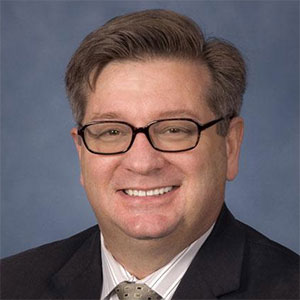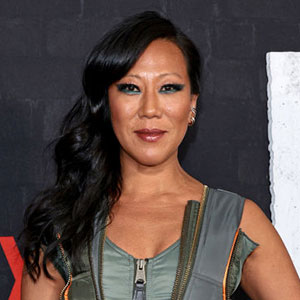
Robert Weldon has long loved gems, which he credits in part to his mother.
“My mother was an amateur gemologist,” he says. “She collected gemstones. She always told me that gemology is a great field, because gems are found all over the world and you can travel the world. And it just seemed like an exotic and amazing thing to be able to do.”
In March, Weldon retired from GIA after 18 years, including seven years as director of its library. That capped a long career that has involved plenty of gemstones, photography, and—yes—travel. Recently, he talked with JCK about his 36 years in the industry, including his years at GIA and JCK.
Weldon was born in Bolivia, the son of a Jewish mother who escaped Nazi Germany in the late 1930s (and could only get a visa to Bolivia) and a father from Texas, who was working there building pipelines. He grew up speaking Spanish, English, German, and “a little bit of Yiddish.”
Following high school, he studied business administration at the University of Arkansas and got a part-time job at a Zales. A friend told him that if he really loved gemstones, he should study at the Gemological Institute of America (GIA).
Weldon paid a visit to GIA’s campus and was instantly hooked. “I looked through a microscope, and when I looked at the interior of the emerald, I was just blown away by the interior life of a gemstone.”
After attending GIA, he worked there, initially as a photographer. But after a few years, he got antsy, so when he heard that there was a writing position open at JCK, he reached out to the magazine’s former editor-in-chief George Holmes.
“George said, ‘You don’t have any experience writing, but I like you,’” Weldon recalls. “He gave me this brutal test, which he said would take a few weeks to complete. He had me rewrite a story, then he had me propose 10 stories, and put them in order of importance, and let him know three contacts I would reach out for each story.
“He was trying to understand if I could meet deadlines, if I had contacts in the trade. I didn’t have any, but by the end of that test, I had certainly developed them. I was basically a de facto reporter taking the test without pay.”
Weldon was initially JCK’s West Coast editor, then moved to Radnor, Pa., the magazine’s home base. In 1997, Weldon was part of the team that left JCK to form a competing publication, Professional Jeweler. Seven years later, he returned to GIA, which had by then moved to its current campus in Carlsbad.
“GIA was a family affair in Santa Monica,” he says. “Now, all of a sudden, we were at a campus that was huge and global.”
He started as photography manager for the GIA library, but also contributed to its publications and traveled to different gem-producing areas. One trip in particular made an impression.
“I went to East Africa, to a place called Kangala, where they mined rhodolite garnet and tsavorite,” he says. “This one miner came out of this hole, wearing tattered clothes, and spilled a trove of gemstones onto a cloth. I started taking pictures of these incredible pieces. On the plane coming back, I realized I never asked the miner his name. I always remembered him, though, and he remained in my mind as emblematic of the difficult life African miners often live. About 80% of the world’s gemstones are mined through these artisanal means. These miners live very close to the margin of failure, barely eking out a living. It always seemed very unfair to me that they would make so little where there’s so much more markup elsewhere.”
At GIA, he wanted to do something about that, and along with veteran researcher Dr. James Shigley and former library director Dona Dirlam, he launched a program to teach artisanal miners the basics of gems.
“We decided to do what GIA does best, which is education,” he says. “But we decided against teaching gemology. We need to do something simpler and more down-to-earth but which would help them understand value. So, when buyers would come to the villages, the miners could negotiate from a position of a little more knowledge and strength. We also wanted to give them a perspective of what the supply chain looks like, so they could aspire to be a broker or maybe even make jewelry.”
The resulting GIA Guide for Artisanal Miners was written on impermeable paper so it couldn’t get ruined. GIA contracted with Pact, an anti-poverty NGO, to distribute the booklet to local communities and hold training sessions for the miners.
One session taught Weldon how potent the concept was.
“We were on the border between Kenya and Tanzania, which produces garnets and other gemstones. There was this huge acacia tree. We were expecting 400 miners, and about 1,000 miners showed up. It was a little intimidating because many miners were unhappy that they had to share their booklets. Once the session got started, however, they all paid rapt attention.”

There were also concerns that the program might anger local buyers.
“We had pushback from some who said we were going to raise prices. I decided we need to include local brokers in our training sessions. That eventually defused the situation. We heard later that the buyers actually liked the program. When they would come into town, after our program, there were more organized assortments of gemstones. Yes, they had to do a little more negotiation for those pieces. But it made it more of a level playing field. The brokers also found they could do their business more efficiently.
“What gave me great joy was that the program grew legs and was able to go further. A lot of those miners have become more sophisticated and have raised their standards of living. I heard, years later, that miners were passing the booklet down to their kids.”

He estimates that he spoke to around 2,000 to 4,000 miners. The program eventually helped spawn similar efforts, like Moyo Gems (run by Pact).
It also convinced Weldon that the industry needs to have a greater connection to people who mine its gems. He urges jewelers to travel to gem-producing areas, though he stresses they should first get proper permits and permissions.
“If you’re selling gemstones, you need to understand the story of the gemstones, who mined them, how they came out of the ground, what makes them special. There’s a real connection between these people and the earth, and the gems they’re extracting from the earth. Today’s consumer wants the gem, but they also want to understand the story behind that gem, and they want to learn about the people who mined it.
“Miners are people just like us. They want stability in their living conditions, an education for their children, and to put dinner on their table. If we forget that fundamental aspect, and treat them as unknown individuals who happen to be bringing us the world’s greatest gems, we are letting go of what’s truly important and remarkable about our industry.”
Weldon says he’s keeping active in the trade as writer and photographer, but looks back fondly at his years at GIA.
“Where else,” he asks, “could you have access to some of the world’s most incredible gemstones on a regular basis? What a privilege that is.”
Photos courtesy of GIA
- Subscribe to the JCK News Daily
- Subscribe to the JCK Special Report
- Follow JCK on Instagram: @jckmagazine
- Follow JCK on X: @jckmagazine
- Follow JCK on Facebook: @jckmagazine





